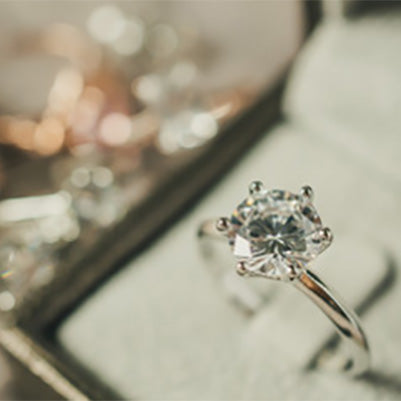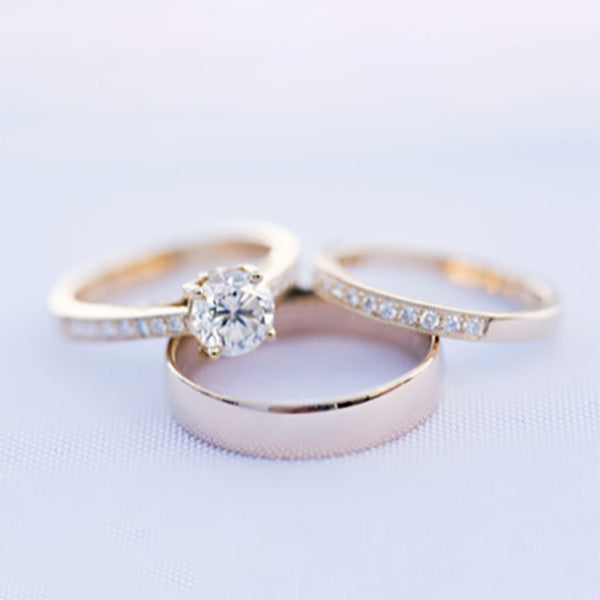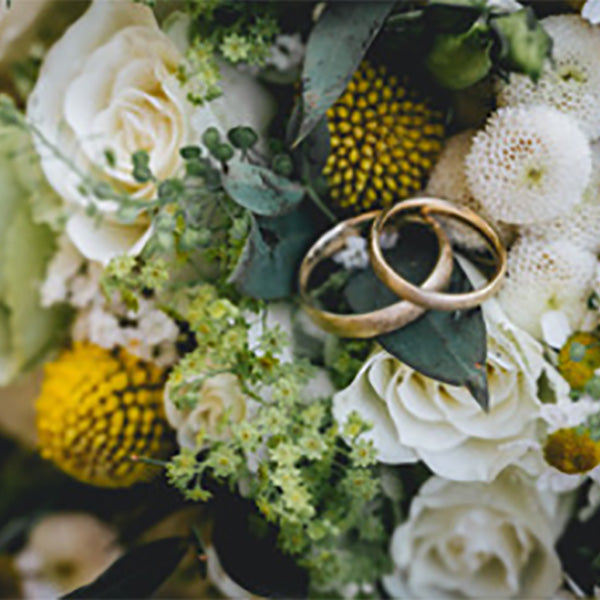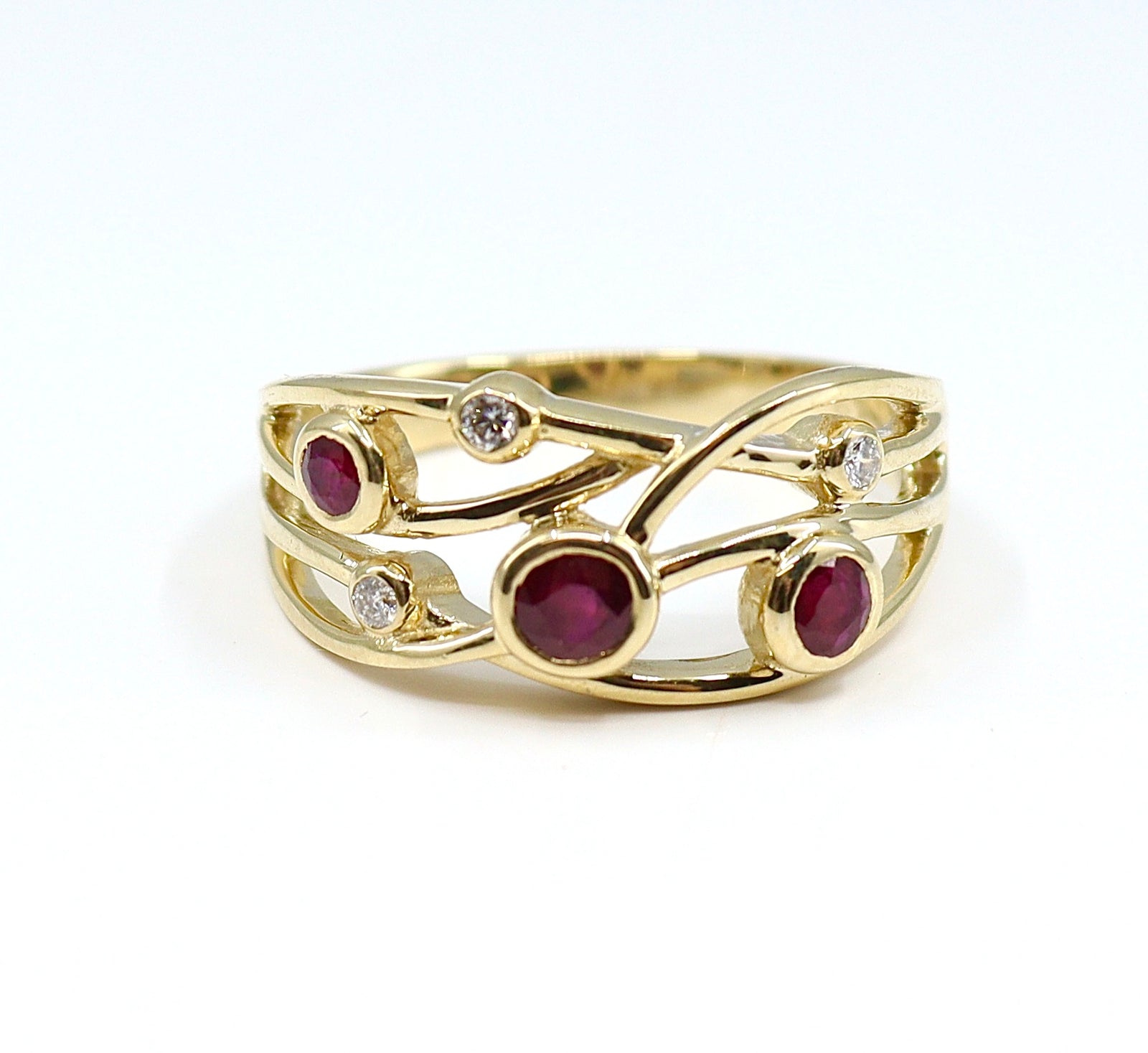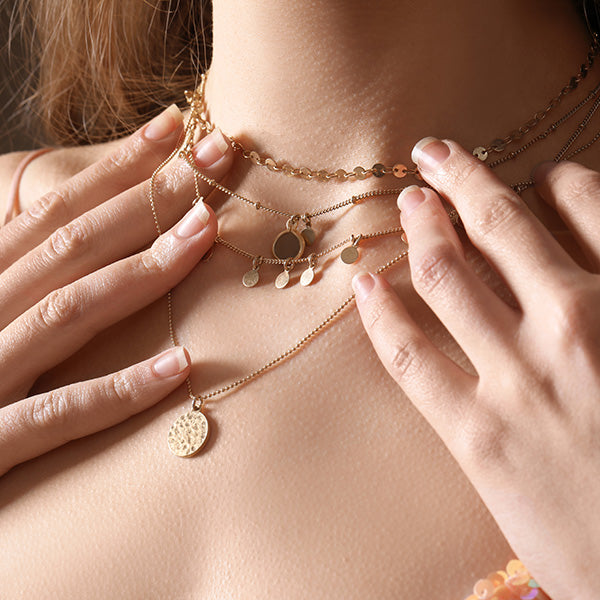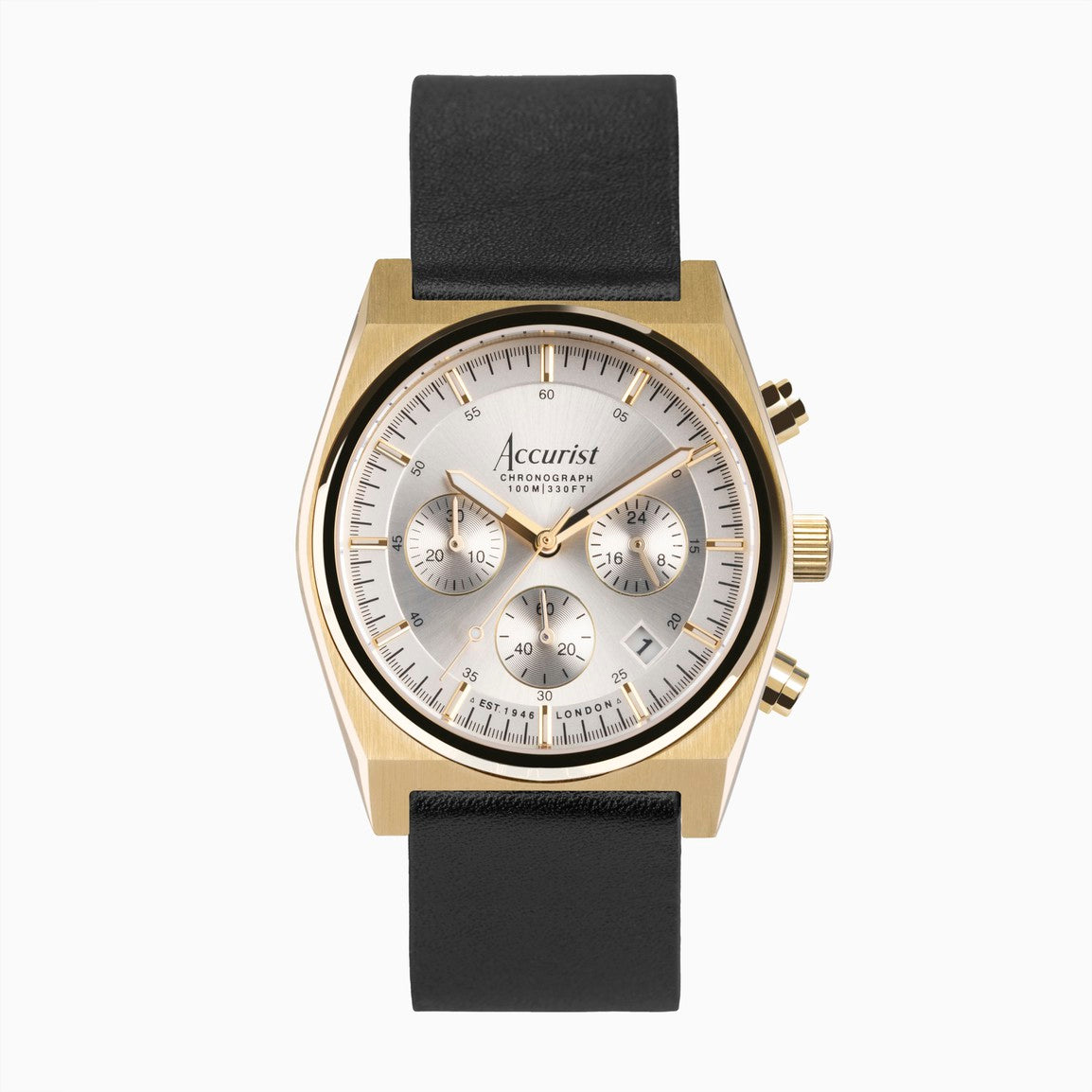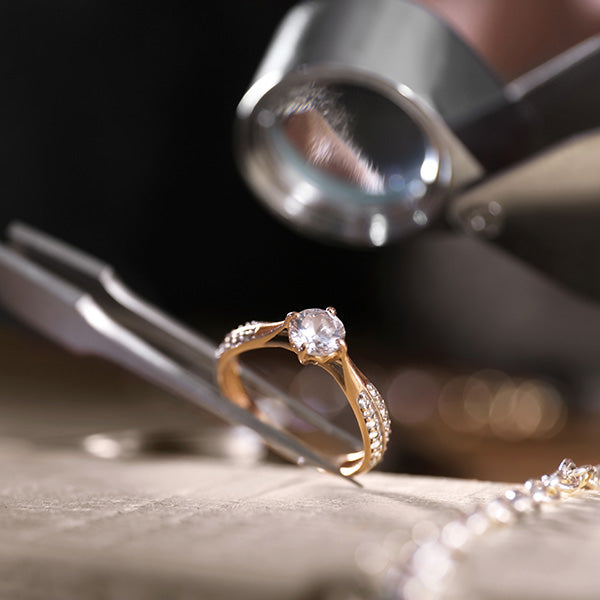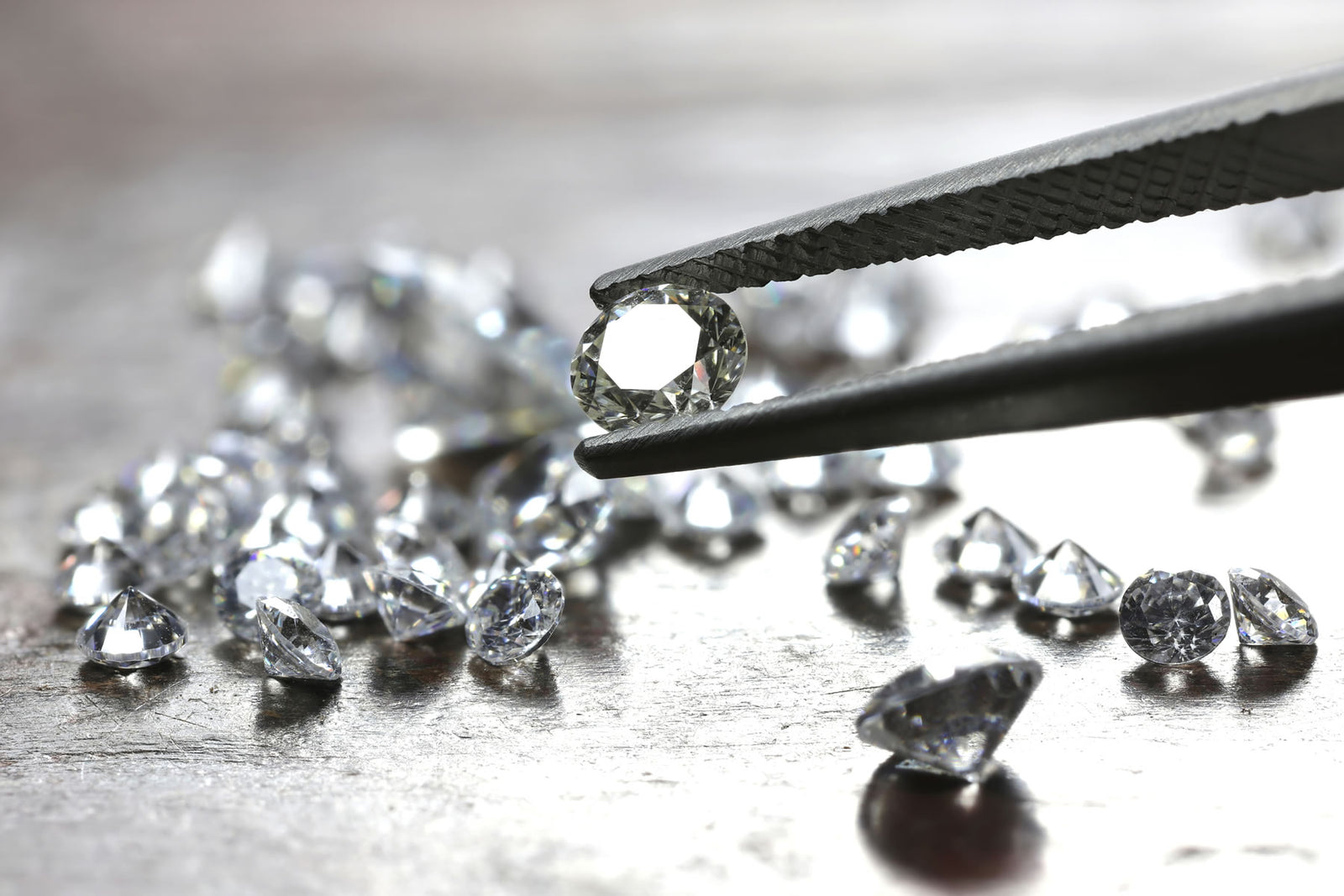A guide to diamonds
Diamonds are the most prized gems on the planet. One of the hardest materials found on earth, diamonds are formed over billions of years and each one is individual.
Our guide will help you understand the globally accepted standards for assessing the quality of a diamond. Known as 'the 4Cs', they are cut, colour, clarity and carat. But first, let's learn more about diamonds and where they come from.
What is a diamond?
The origin story of diamonds is part of their beauty. Formed in the earth billions of years ago, before the age of the dinosaurs, diamonds were brought closer to the surface by volcanic eruptions. No one knows exactly when diamonds were first used for adornment, but it was in ancient times.
Diamond is one of two crystalline forms of the element Carbon (the other being graphite). Diamonds are formed at depths of around 90 miles or more in volcanic pipes within the Earth's surface, at this depth the carbon is under pressures of approximately 5 gigapascals and a temperature of roughly 1200 degree Celsius transforming it into diamond. The longer a diamond is exposed to this intense heat and pressure, the larger the diamonds cubic crystal structure grows.
A diamond's crystal system is Isometric (cubic) and because of the uniform arrangement of their constituent carbon atoms, diamond crystals are well-formed - usually octahedral with rounded edges and slightly convex faces.
The unique characteristics of diamonds go far beyond what you can see with your eye: they're not just beautiful, they are the hardest natural substance on earth.
Diamonds do not easily break, chip or crack, and they are extremely resistant to heat and chemicals: it would take a temperature of at least 720° Celsius in air, or 850° Celsius in a vacuum, to burn a diamond.
Where do diamonds come from?
Diamonds were first discovered and mined in India over 2,400 years ago. Over time, diamonds were found in many other areas around the world, including many in Africa. In today's trade, Africa, Russia, Australia, and Canada produce the most diamonds. Also it is believed by some scientists that diamonds may exist in large quantities on Neptune and Uranus.
In order to get the perfect diamond for your engagement ring there are several factors to consider. You’ve read about the 4Cs of diamond education, let us guide you through them to help you find the perfect one for you.
Carat weight
Instead of grams or kilos, diamonds are weighed in carats (not to be confused with gold’s Karat which signifies purity). This simply denotes a measuring scale where each 1 carat = 0.2 grams (0.50 carat = 0.1 gram and 5 carats = 1 gram).
Dimensions play an important role in the appearance of a diamond. In addition to the carat weight, the distance across the top of the diamond must also be taken into consideration. A common misconception is that half a carat is half the size of one carat. In fact, a half carat is half the weight of one carat, but the millimetre difference on a round stone is only 1.35mm. The average measurement for a 0.50ct stone is 5.00mm, while the average 1.00ct stone measures at 6.35mm. Have a look at our chart below.
While carat weight may indicate a diamond’s size, the shape and cut of a stone also play a large part in determining how large or small the stone appears. An elongated shape such as the Marquise cut may appear larger than a rounded shape such as the round brilliant even if the two stones share the same weight.
When comparing two stones of the same shape however, it is important to look at the cut grades and table and depth percentages, as shallower stones will tend to appear larger than deeper ones. Other aspects such as girdle width can also affect how large a stone appears, while not necessarily affecting the quality of the stone.
Cut
It´s the cut that gives your diamond its sparkle, its brilliance. To glimmer beautifully, a diamond should have an Ideal, Very Good or Good cut grade. a poorly cut diamond looks dull, even if it has the perfect colour and clarity. It´s all about how a diamond reflects light: when a diamond is cut with the proper proportions, light bounces out of the top of the diamond (which gemmologists refer to as the table). If it is cut too shallow, light leaks out of the bottom; too deep and it spills out of the side.

Clarity
When diamonds are formed, deep underground and under extreme pressure and heat, imperfections in the crystal structure can form and mineral impurities become trapped inside the stone.
The size of these impurities and imperfections determine the clarity grading of a diamond. Diamonds without such impurities are very rare.
Gemmologists refer to diamonds´ imperfections by a variety of technical names, including blemishes and inclusions.


Colour
With non-fancy diamonds a universally accepted scale exists (defined by the Gemmological Institute of America). The scale is divided into steps between "D" and "Z" - D being the best (or whitest).
- D - E exceptional white
- F - G rare white
- H white
- I - J slightly tinted white
- K - L tinted white
- M - Z tinted colour


Most diamonds that are extracted from the earth are colourless to a light yellow (D to Z) Fancy colour diamonds go off this scale and have a deep distinct and rich colour. Diamonds of all colours can be found in nature, such as yellow, green, blue, purple, orange, brown, black and red. They are each a phenomenon of nature, revealing themselves on incredibly beautiful shades and hues.
Unlike colourless and near colourless diamonds which are valued for their lack of colour, fancy coloured diamonds are valued for the intensity and distribution of theirs. These diamonds are extremely rare and tend to be found mostly as small stones weighing less than a carat. It is estimated that there is one fancy coloured diamond for every ten thousand near-colourless ones.
Brand new technology means that diamonds can now be heat treated using very high temperatures and pressures to produce colour changes. The technique produces intense aqua blues, greens, blacks, yellows and golds. These heat-treated diamonds are generally more costly than white diamonds but are affordable.
Shape
Thanks to its unrivalled sparkle and brilliance, the round diamond is our bestseller. It looks great in a wide range of settings and is naturally flattering to many different hand and finger shapes. Non-round fancy-shaped diamonds, such as princess, emerald, pear, and Asscher are less popular than rounds, but offer an array of beautiful style options. Plus, these distinctive shapes often cost less than rounds of the same carat weight, allowing you to make the most of your budget. Ultimately the diamond shape that you fall in love with comes down to personal preference. You’re the one who gets to admire it every day! Click here to see a guide by GIA to some of the most popular diamond shapes, all available here at Shaw Jewellers.
About diamond certificates
What is a diamond certificate?
There is an international standard for the grading of diamonds, known as the 4 C's, it defines the stone's carat weight, its colour, its clarity and its cut. A certificated diamond is one that has been independently (of the retailer) graded and the carat weight, colour, clarity, cut and other factors recorded on a certificate that is sold with the diamond. There are two main types of certificate - the full certificate and the "diamond dossier". The most common certificates we use at Shaw Jewellers are GIA, IGI and HRD because they provide the best, most consistent results
Is a certificated diamond better than a non-certificated one?
No. All the certificate means is that someone else, independent of the seller, has assessed the stone's characteristics.
Should I buy a certificated or non-certificated diamond
This rather depends on who you are buying from! There is little advantage in a certificate if you are buying from a respected and established retailer - in fact, you are likely to get less 'diamond for your money' going the certificated route as of course the price of the independent assessment has to be included in the price of the stone. You will be quite safe buying a non-certificated stone from an established jeweller based in the UK as their receipt will represent a guarantee of the stone's grade.

